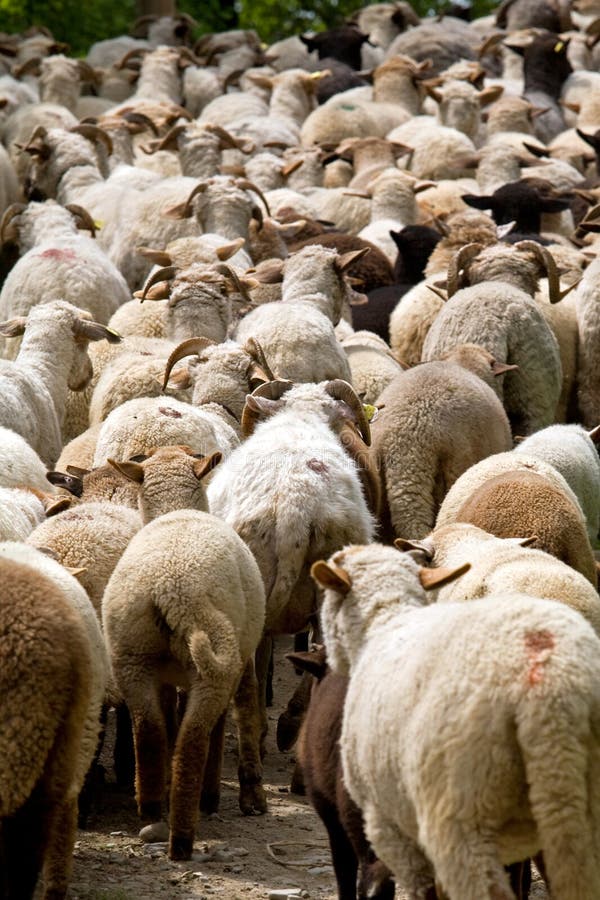Understanding Spatial Behavior in Sheep and Its Impact on Daily Life
Spatial behavior in sheep refers to their movement and use of physical space in their environment. The behavior of sheep is influenced by their natural instincts, herd dynamics, and environmental factors.

Spatial behavior plays an important role in the everyday lives of sheep. For example, sheep are hesitant to move towards dark or enclosed areas. Therefore, if they need to be moved into a barn at night, turning on the barn light can help them follow you in. Additionally, quick movements, loud noises, and dogs can frighten sheep, causing them to run. It is important to keep these factors in mind when handling sheep to avoid causing unnecessary stress and harm to the animals.

Navigation Strategies and Routes Used by Sheep
Sheep have been found to have the ability to learn and optimize new migration routes over time, and the more time a population spends in a new habitat, the more effectively its members can surf. Advances in animal identification, movement recording, and traceability have allowed for the use of sheep movement data to inform the design and interpretation of surveillance activities.

Sheep managers can select among different rutting strategies in mountain sheep by varying harvest management to favor relative frequencies of behavior patterns during rut, as this can influence the achievement of management goals. When handling sheep, it is recommended to gently handle them without yelling or hitting, and facilities should include an easy way to catch and restrain animals for observation or treatment. Integrating sheep in vineyard systems has been recognized for its potential to reduce environmental impacts and improve farmer livelihoods.
The Role of Foraging Strategies in Sheep Survival: Benefits and Limitations
Foraging strategies can have a significant impact on the survival of sheep as they balance the benefits of nutrition with the costs of obtaining food, including the risk of predation.
According to the University of Idaho, individual sheep must scan for predators to avoid predation, but the more time they spend with their heads up scanning, the less time they have to spend foraging. Sheep avoid this catch-22 by foraging in larger groups, reducing the time each individual needs to spend scanning for predators.
The Impact of Weather & Climate on a Sheep’s Spatial Behaviors
Weather and climate can have a significant impact on a sheep’s spatial behaviors, particularly during seasonal movements and foraging patterns. For example, in areas with harsh winter conditions, sheep may migrate to lower elevations during the winter months to avoid deep snow and limited forage availability. In addition, studies have shown that sheep adjust their foraging behavior based on environmental factors such as temperature and precipitation. In warmer, drier conditions, sheep may spend more time foraging in areas with higher moisture content, while in cooler, wetter conditions, they may prioritize grazing in drier areas to avoid excessive moisture.
Climate change is also affecting sheep’s spatial behaviors. Changes in precipitation patterns and vegetation growth due to climate change can alter the availability and quality of forage, leading to changes in migration patterns and foraging behaviors. For example, prolonged drought conditions can lead to a decrease in forage availability and quality, which can lead to changes in sheep migration patterns and foraging behaviors.
The Role Humans Play In Modifying or Shaping the Spatial
Humans can significantly modify or shape the spatial behaviors of sheep through various means, including land use changes, livestock management practices, and habitat alterations. For example, agricultural practices such as fencing and land use changes, such as the conversion of grazing lands into croplands, can limit the movement of sheep, altering their spatial behaviors. Similarly, the construction of roads, buildings and other infrastructure can fragment habitats, which can impact the movement patterns of sheep and reduce their access to foraging resources, such as water and vegetation.

Livestock management practices, such as herding and grazing systems, can also modify the spatial behaviors of sheep. Herding can direct the movement of sheep to specific areas, which can alter their foraging patterns and migration routes. Grazing systems, such as rotational grazing and high-intensity, short-duration grazing, can also impact sheep’s spatial behaviors by influencing their foraging choices and the distribution of available forage.

